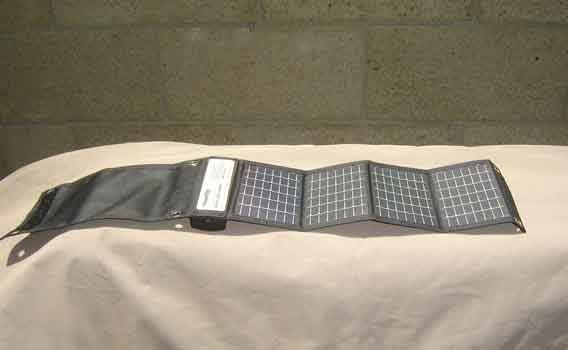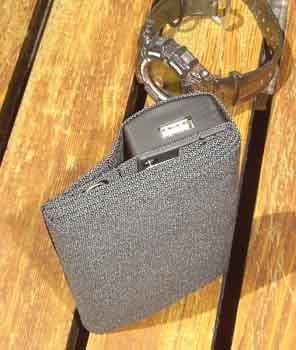You are using an out of date browser. It may not display this or other websites correctly.
You should upgrade or use an alternative browser.
You should upgrade or use an alternative browser.
Solar charge controller which powers load from solar before batteries
- Thread starter mlrtime99
- Start date
DaveInDenver
Middle Income Semi-Redneck
Another reason I could see doing this would be if the PV controller isn't intelligent, being optimized for a single voltage and you don't have a smart battery charger in the circuit. In that case it's running like an alternator or generator. Then where you put the various loads makes no difference but neither is it probably going to charge the battery efficiently. It's always essentially bulk charging the battery with whatever excess current isn't being used. This is just like in your car, which runs at the voltage regulator set point and never really conditions the battery. It's not efficiently using the power but OTOH it is built to generate lots of power rather than be sized to be efficient. That's OK in a vehicle with a combustion engine that has tons of power available that goes unused most of the time. With a PV this means you're carrying much larger and expensive panels than you need. You're sizing for the 10% of the time you need high current bulk charging (which will also only happen for a short time daily) rather than the 75% of the time you're not.
brianjwilson
Some sort of lost...
I swear I read it on this forum last night but must have forgotten to book mark it. Someone was talking about a MPPT charge controller which sent power from the panels to the load BEFORE going to the batteries and how much more efficient this would be. Was I just dreaming or is anyone aware of that controller?
I don't believe it makes any difference either way unless you're significantly reducing your wiring runs. I guess technically my truck and camper were setup that way but it had nothing to do with a special controller. I had the "house" batteries under the back seat of the truck. I mounted positive and negative posts in the camper, and wired the solar control, batteries and electrical consumers all to those posts. So I supposed if I was charging at 10 amps, drawing 5 amps with the fridge (and charging the battery with 5), there would be less voltage drop than if I were pushing 10 amps to the battery, and pulling 5 amps back out over the long run of wire from the camper to the truck.
In most cases the solar controller would be mounted pretty close to the battery and it wouldn't make much difference either way as everything is connected together either way.
Borrego60
Rendezvous Conspiracy
My View Star controller has one. See solar on the tundra.http://www.expeditionportal.com/forum/threads/162805-Solar-project-for-the-Tundra
FLEXOPOWER USA
New member
Here is a graph relevant to the topic
https://www.flexopowerusa.com/blogs/news/112910851-solar-powered-fridge-kit-the-best-setup
https://www.flexopowerusa.com/blogs/news/112910851-solar-powered-fridge-kit-the-best-setup
dwh
Tail-End Charlie
Here is a graph relevant to the topic
https://www.flexopowerusa.com/blogs/news/112910851-solar-powered-fridge-kit-the-best-setup
"It makes sense to connect your solar powered fridge to the solar regulator of your solar powered system.
Here is why:
Eliminating 15% loss in battery"
Nope. There is only a loss if the power is first stored in the battery, and then later drawn out. If the solar is producing, the power to the fridge flows directly to the fridge, without being stored in the battery first. That happens regardless of whether the fridge is connected to the controller's load terminals or connected directly at the battery.
"Reducing battery cycles and prolonging battery service life"
Nope. Since the power for the fridge is flowing directly to the fridge without being first stored in the battery, there are no extra cycles being created, so there is no reduction in cycles.
"Read system information from LCD display: battery voltage, solar current inflow, current outflow to load"
Maybe. Depends on the controller. I think most show: battery voltage, solar current inflow, current outflow to BATTERY (not load). Where's the manual for the specific controller being referred to?
"Low voltage disconnect to protect battery"
Sure. I think all controllers that have load terminals have LVD. But it's not a reason to use the load terminals for a fridge - fridges all have LVD too. Don't need two LVDs in series.
"Load has priority.Any surplus charges battery"
That isn't a function of the controller, that's just how electricity flows normally. And it works that way no matter if the load is connected to the controller's load terminals or directly to the battery.
"Electronic switch between battery and solar at sunset/sunrise"
Nope. The load terminals always draw from the battery. At sunset, the incoming power from the solar fades away and all power for the loads comes from battery only, but again, that's how it always works - it's not some magic extra switching functionality of the controller. And again, it works the same even if the load is connected directly to the battery.
Sorry man, but I gotta call BS on that whole spiel. It's either a result of not understanding how this stuff actually works...or it's deliberately misleading marketing hype/crap.
But either way, it is NOT true.
The ONLY actual advantage of hooking a load to the load terminals is the LVD. But since the fridge already has LVD...meh.
dwh
Tail-End Charlie
[Edit:
******? This post was in reply to another post, and now that post has disappeared.
Whack. Whatever. Guess I should have quoted it so I didn't look like I was talking to myself...again. ]
]
I think most of the fridges have adjustable LVDs, so my point had nothing to do with the fridge having a higher LVD setting. The point was you just don't need two LVDs for a single load.
And sure, different controllers have different features. Some have programmable timers on the LVD circuit to turn lighting on and off. Others have an LVD circuit, and a separate timer controlled circuit.
Doesn't alter what I said above one bit though. All those so-called reasons to hook a fridge to the load terminals are misleading BS.
I mean, they might as well say something like: "It's very important to connect the fridge to the load terminals, so that the fridge gets power from the battery! (It's a feature!)"
Oh, puh leeze.
******? This post was in reply to another post, and now that post has disappeared.
Whack. Whatever. Guess I should have quoted it so I didn't look like I was talking to myself...again.
I think most of the fridges have adjustable LVDs, so my point had nothing to do with the fridge having a higher LVD setting. The point was you just don't need two LVDs for a single load.
And sure, different controllers have different features. Some have programmable timers on the LVD circuit to turn lighting on and off. Others have an LVD circuit, and a separate timer controlled circuit.
Doesn't alter what I said above one bit though. All those so-called reasons to hook a fridge to the load terminals are misleading BS.
I mean, they might as well say something like: "It's very important to connect the fridge to the load terminals, so that the fridge gets power from the battery! (It's a feature!)"
Oh, puh leeze.
Last edited:
rayra
Expedition Leader
Having slept on it, I'm thinking maybe one of those fold up nylon backed little portable solar rigs might have been what the OP saw?
They might be setup to charge phones or whatever without an external battery. Never really looked closely at those myself.
Some of those use rechargeable batteries, are designed to charge the batteries for use in other devices, but also - with the batteries charged, or at least in the circuit - will power a USB port so small electronics can be plugged in.


Similar threads
- Replies
- 3
- Views
- 1K
- Replies
- 0
- Views
- 562
- Replies
- 4
- Views
- 1K
- Replies
- 2
- Views
- 860
